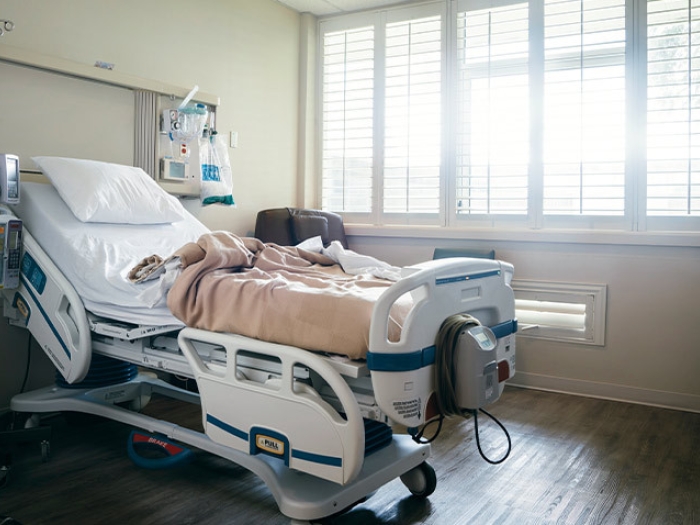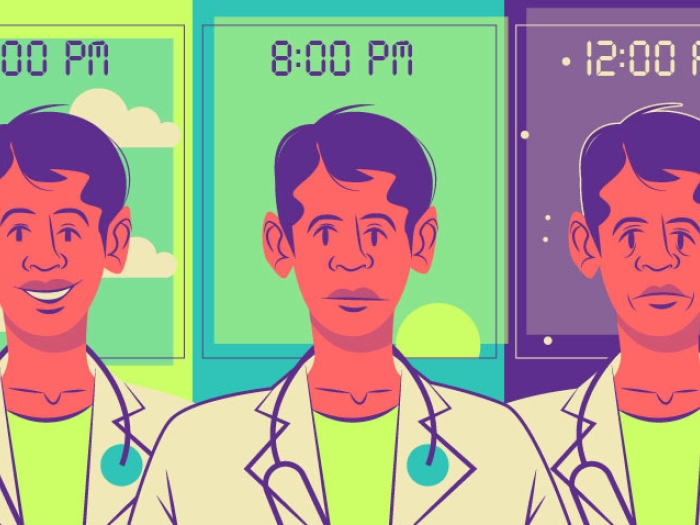Healthy Michigan Plan enrollees experienced a six-point increase in employment or student status in one year, while employment for all Michiganders stayed the same.
11:00 AM
Author |

Getting covered by health insurance may have a major impact on a low income person's ability to get a job or enroll in school, according to a new study that gives the first direct look at the relationship between the two.
The percentage of low income people enrolled in Michigan's Medicaid expansion program who had jobs or were enrolled in school jumped six points in one year, the study shows. That outpaced employment gains among the state's general population during that same time.
Even larger increases in employment and school enrollment happened among African Americans, men, people in their late 30s and 40s, and those with the lowest incomes.
The study of low income people enrolled in what the state calls the Healthy Michigan Plan was performed by a team at the University of Michigan Institute for Healthcare Policy and Innovation, and published in a new paper in JAMA Network Open.
Year-over-year gains
For the study, the researchers surveyed more than 3,000 people with Healthy Michigan Plan coverage from across the state, first in 2016 and again in 2017 or the first month of 2018. The program is open to all people over age 18 in Michigan who have incomes up to 133% of the poverty level, or about $15,800 for an individual and $32,000 for a family of four in 2017. About 670,000 Michiganders currently have the coverage.
MORE FROM THE LAB: Subscribe to our weekly newsletter
The six point jump in those who said they had a job or were in school was seen both in those who stayed in the program for the entire period studied, and among the 23% who had left the program by the time the researchers contacted them.
The findings have implications for states that haven't expanded Medicaid under the Affordable Care Act, and for those that have applied for or received permission from the federal government to require enrollees to report whether they're working, or doing other qualifying activities, in order to keep Medicaid coverage.
SEE ALSO: Benefits for Mind, Body and Work Ability Seen in Medicaid Expansion
"While on a statewide level, both in the general population and the low-income population, employment levels didn't change much between 2016 and 2017, we saw a clear increase in employment or student status among those in the Healthy Michigan Plan, even among those with health conditions who we might think would need more time to achieve this," says Renuka Tipirneni, M.D., M.Sc., the lead author of the new study and an assistant professor of internal medicine at U-M. "The ability to get access to care, attention for existing or new health issues, and to gain function, appears to have a clear impact on the chances of getting a job or studying or training to get a job later."
Tipirneni is a member of the IHPI team that is carrying out a full evaluation of the Healthy Michigan Plan's effects for the state government. She notes that the study is unique because it includes longitudinal data on the Medicaid expansion enrollee population, including those who have left the program. The team continues to gather data on the longer term status of these enrollees and former enrollees.
The ability to get access to care, attention for existing or new health issues, and to gain function, appears to have a clear impact on the chances of getting a job or studying or training to get a job later.Renuka Tipirneni, M.D., M.Sc.
Larger jumps in some groups
The team had previously published findings from their 2016 survey of Healthy Michigan Plan enrollees that showed that nearly 49% were working, 27% were out of work, 11% said they were unable to work and 5% were already enrolled as students. The rest were homemakers or retired.
The new study shows that the combined percentage of those who were employed or students in 2017 was 60%, which is an increase from the combined 54% who were employed or students in 2016.
When the researchers delved deeper into the survey results, they found that people aged 35 to 50 had an eight percentage point increase, people whose incomes were less than one-third of poverty level had a 9-point jump, and non-Hispanic black enrollees had nearly an 11-point jump. The increase among all men was 6.7 points, compared with 4.8 points for women.
SEE ALSO: How Medicaid Expansion Gave Enrollees a Major Financial Boost
The 6-point gain was an average for Medicaid expansion enrollees across the state. By comparison, the general Michigan population had a steady rate of employment from 2016 to 2017, with 75% of residents between the ages of 19 and 64 being employed or enrolled in school in 2017, according to data from the United States Census Bureau.
Among all Michiganders in this age range with incomes at or below a level that would be eligible for enrollment in Medicaid or the Healthy Michigan Plan, employment or student status didn't change from 2016 to 2017, when 43% of the entire group was employed or students.
"Our findings suggest states could achieve goals of fuller employment among low income residents by expanding Medicaid coverage or maintaining an expansion program," says Susan Goold, M.D., MHSA, M.A., the senior author on the new paper and a professor of medicine, "Good health helps people gain employment or stay employed."
Goold and colleagues are looking at the patterns of coverage among those who enrolled in the Healthy Michigan Plan in its first five years, including how many left the plan because they obtained other coverage such as through an employer or for other reasons.
LISTEN UP: Add the Michigan Medicine News Break to your Alexa-enabled device, or subscribe to our daily updates on iTunes, Google Play and Stitcher.
IHPI is conducting the evaluation required by the Centers for Medicare and Medicaid Services of the Healthy Michigan Plan under contract with the Michigan Department of Health and Human Services. Data collection for this paper was funded by Michigan Department of Health and Human Services and Centers for Medicare and Medicaid Services for the purposes of the evaluation, but the study findings don't represent the official views of either agency.
Paper cited: "Association of Medicaid Expansion With Enrollee Employment and Student Status in Michigan," JAMA Network Open. DOI: 10.1001/jamanetworkopen.2019.20316

Explore a variety of healthcare news & stories by visiting the Health Lab home page for more articles.

Department of Communication at Michigan Medicine
Want top health & research news weekly? Sign up for Health Lab’s newsletters today!





